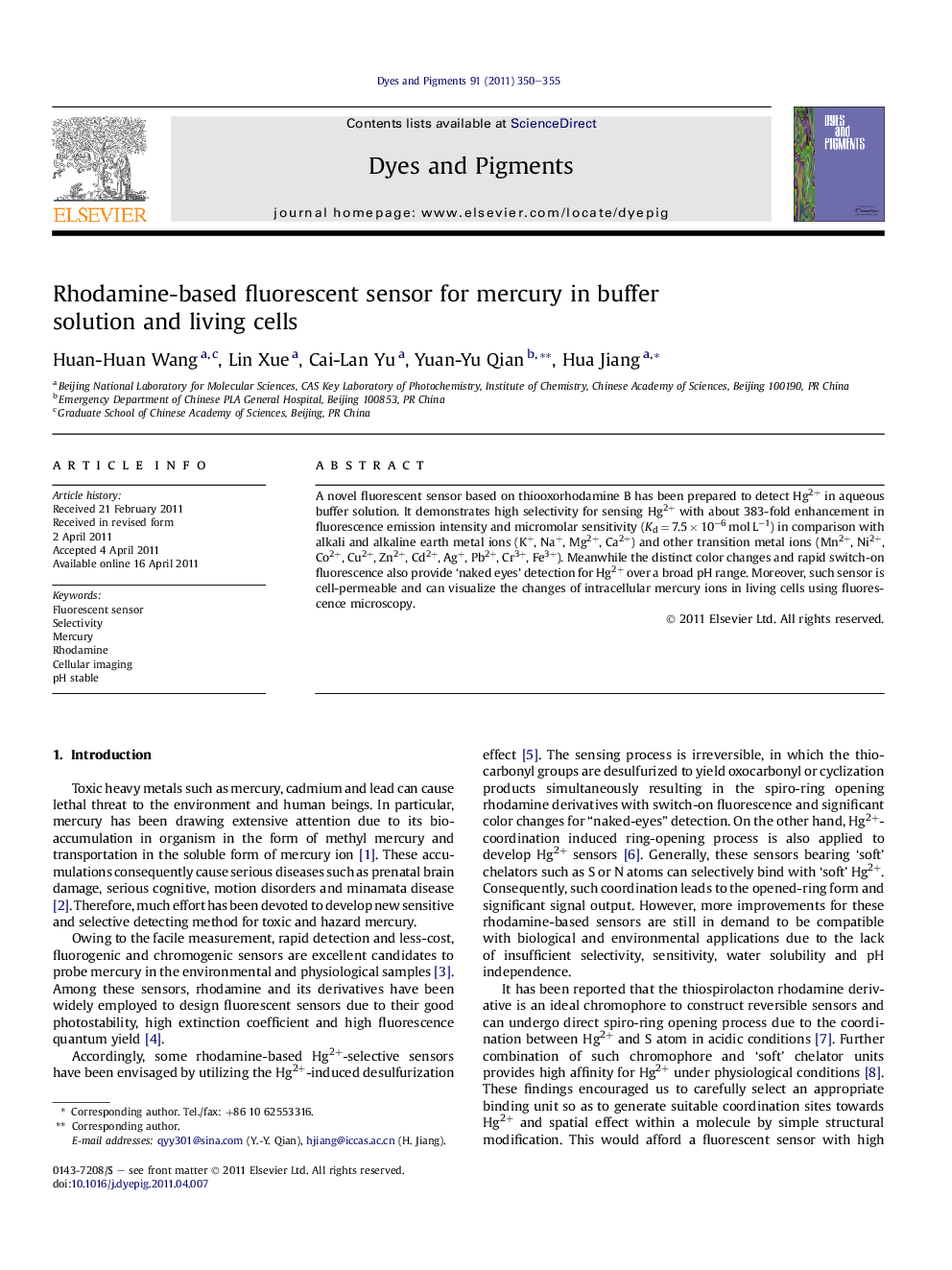| کد مقاله | کد نشریه | سال انتشار | مقاله انگلیسی | نسخه تمام متن |
|---|---|---|---|---|
| 177156 | 458967 | 2011 | 6 صفحه PDF | دانلود رایگان |

A novel fluorescent sensor based on thiooxorhodamine B has been prepared to detect Hg2+ in aqueous buffer solution. It demonstrates high selectivity for sensing Hg2+ with about 383-fold enhancement in fluorescence emission intensity and micromolar sensitivity (Kd = 7.5 × 10−6 mol L−1) in comparison with alkali and alkaline earth metal ions (K+, Na+, Mg2+, Ca2+) and other transition metal ions (Mn2+, Ni2+, Co2+, Cu2+, Zn2+, Cd2+, Ag+, Pb2+, Cr3+, Fe3+). Meanwhile the distinct color changes and rapid switch-on fluorescence also provide ‘naked eyes’ detection for Hg2+ over a broad pH range. Moreover, such sensor is cell-permeable and can visualize the changes of intracellular mercury ions in living cells using fluorescence microscopy.
ThioRh-1 can monitor mercury ions both in solution by naked-eyes and in living cells by fluorescence microscopy.Figure optionsDownload as PowerPoint slideHighlights
► A new fluorescent sensor for Hg2+ is based on thiooxorhodamine structure.
► Hg2+-chelation induces significant fluorescence enhancement in HEPES buffer.
► It shows high affinity for Hg2+ over other metal ions.
► This cell-permeable sensor can visualize the changes of intracellular mercury ions.
Journal: Dyes and Pigments - Volume 91, Issue 3, December 2011, Pages 350–355